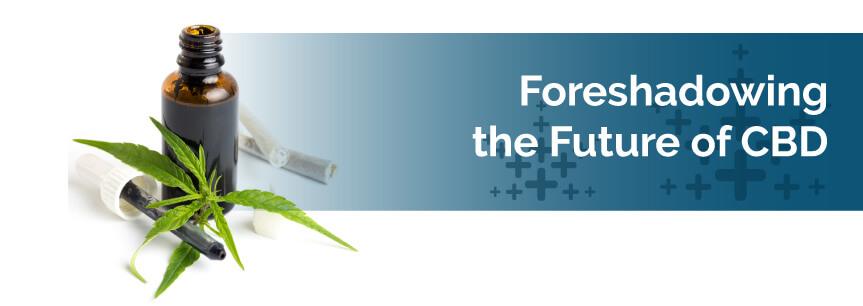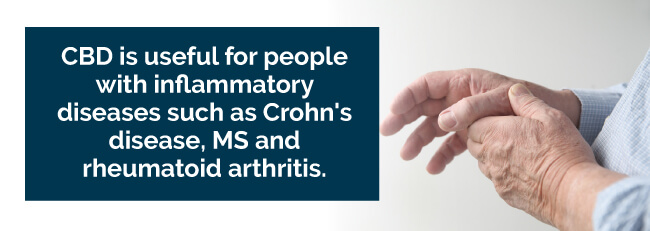
The U.S. Drug Enforcement Agency currency lists marijuana and cannabidiol as a Schedule I drug — illegal to buy, sell and consume at the federal level. Although there is insignificant evidence indicating that cannabidiol is not psychologically or physically addicting, the likelihood of the DEA moving CBD from a Schedule I drug to a legally obtainable Schedule III, IV or V drug in the near future does not, at the moment, seem feasible.
Schedule III drugs include Tylenol with codeine and anabolic steroids. Schedule IV drugs include Valium and Xanax — supposedly drugs with a “low potential for abuse” — and Schedule V drugs include Lyrica and Robitussin AC.
Medical and recreational marijuana proponents consider the DEA’s resistance to re-scheduling marijuana and CBD stems from Republican-backed campaigns such as Reagan’s War on Drugs. These campaigns vilified marijuana with the unsubstantiated claim that pot was a “gateway” drug leading to heroin and cocaine addiction. Fortunately, ongoing research today is steadily accumulating rigorous evidence that marijuana and CBD offer medicinal properties for people suffering severe and chronic illnesses.
Although CBD remains illegal at the federal level, safeguards exist that protect medical marijuana patients from being federally prosecuted for possessing and using CBD for medicinal purposes. One of these safeguards is the Rohrabacher-Farr Amendment passed in 2014 as an amendment to an appropriations bill preventing the Justice Department from using departmental funds to obstruct implementation of medical marijuana laws in all 50 states. However, until comprehensive medical cannabis legislation is passed by Congress, people are still committing an illegal act under federal laws by possessing and using CBD.
Medical marijuana proponents expect continued progress with expanding state cannabis programs. Nearly 75 percent of U.S. citizens support access to medical marijuana without legal ramifications. As states increasingly enact regulations that ensure patients receive high-quality marijuana and that only people with doctor’s recommendations receive medical marijuana, the likelihood that Congress and the DEA come to an agreement about making medical marijuana possession and use legal at the federal level is strong.
Can legalizing cannabidiol reduce the opioid epidemic? Perhaps. To explain, let’s start with a brief history of opioid addiction.
The Sumerians dubbed the poppy plant the “joy plant” several thousand years ago when they discovered its psychoactive and medicinal properties. With its powerful ability to relieve intense pain and induce drowsiness, opium was widely implemented in America until the early 20th century for cholera, dysentery, smallpox, toothache and influenza.
In fact, opium comprised most medicinal formulas at that time, from analgesics to cough syrup to “health” tonics. One notorious medicine called “Mrs. Winslow’s Soothing Syrup” claimed to calm fussy children and relieve various childhood illnesses. Unfortunately, parents did not realize this soothing syrup was rich in alcohol and morphine, two highly addictive drugs harmful to children and adults who ingest them regularly.
In 1906, President Theodore Roosevelt enacted the Pure Food and Drug Act that required addictive, dangerous ingredients to appear on bottle labels so people knew exactly what they were putting in their bodies. In 1909, the Smoking Opium Exclusion became the first time the U.S. attempted to prohibit certain drugs. This banned opiate importation for recreational use only.
Following World War II, opioid addiction increased significantly, culminating in the beginning of a severe heroin addiction affecting Vietnam veterans returning from war. In addition, pharmaceutical companies started developing prescription painkillers by funding their own research studies and providing, in some cases, incomplete results. During the 1980s and 1990s, Big Pharma representatives aggressively pursued doctors on the medical benefits of their drugs — which evidently worked since the U.S. is now the biggest consumers of pain pills.
Between 2004 and 2010, state law enforcement agencies cracked down on closing “pill mills,” or doctors who prescribed opioids to just about anyone who could pay for them. Unfortunately, suddenly preventing hundreds of thousands of opioid addicts from accessing prescription pain pills forced these addicts to turn to the streets for a cheap, easy to get alternative — heroin.
Between 2007 and 2014, heroin use tripled in the U.S. due to the DEA enacting new regulations against pill mills and unscrupulous doctors prescribing pharmaceutical pain killers to people who did not need them.
Pharmaceutical companies making billions of dollars off opioid pain medications do not want medical marijuana and cannabidiol made federally legal. This would remove any restrictions remaining that stop people with painful and severe disorders from benefiting from the medicinal effects of cannabidiol. As a non-psychoactive, non-addictive component of marijuana, CBD has been shown to relieve a variety of symptoms for which opioids are routinely prescribed, including postoperative discomfort, chronic musculoskeletal diseases/disorders, cancer pain and severe muscle spasms.

CBD is also useful for people with inflammatory diseases such as Crohn’s disease, MS and rheumatoid arthritis for reducing inflammation in the GI tract, joint ligaments and muscles. Cannabidiol eye drops may also delay the progression of glaucoma by reducing ocular tension and damage to the optic nerve.
MarijuanaDoctors.com remains committed to providing relevant, up-to-date information regarding the status of the medical marijuana industry in the U.S. We offer lists of all medical marijuana doctors practicing in each state as well as instructions on contacting a marijuana physician.
In addition, MarijuanaDoctors.com can help you with obtaining your medical marijuana card and finding dispensaries near your location. Browse our website to find the resources you need or contact us to receive answers to your questions within 24 hours.
No Information on MarijuanaDoctors.Com should be used to diagnose, treat, prevent or cure any disease or condition. You can view our Full Disclaimer here.